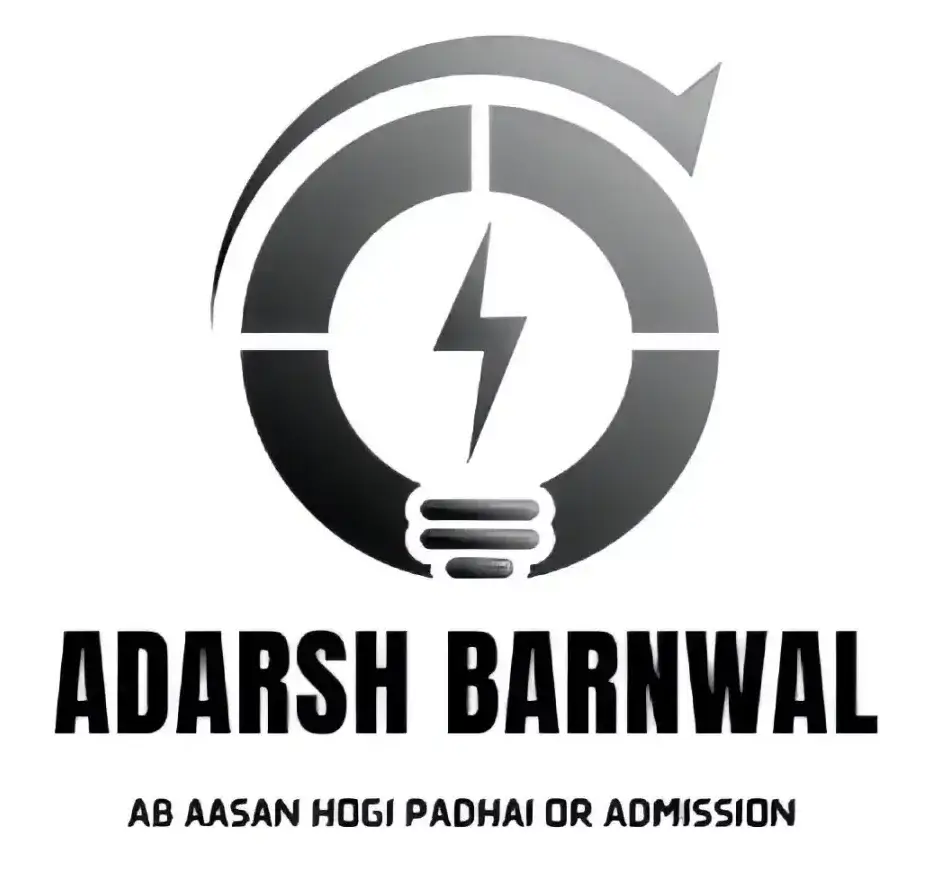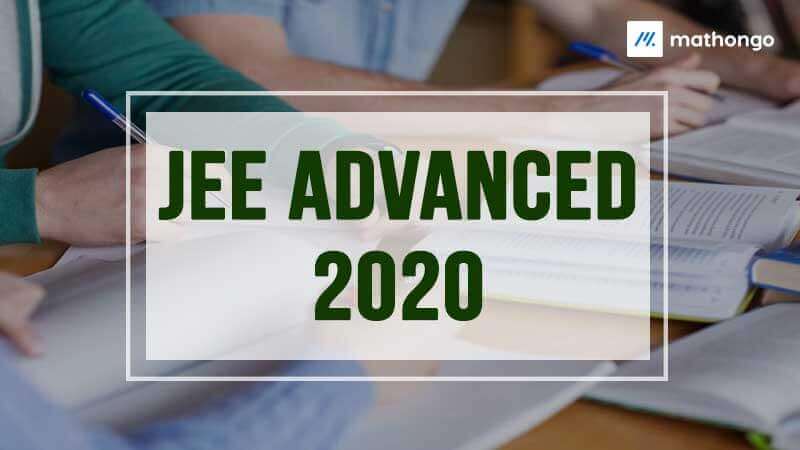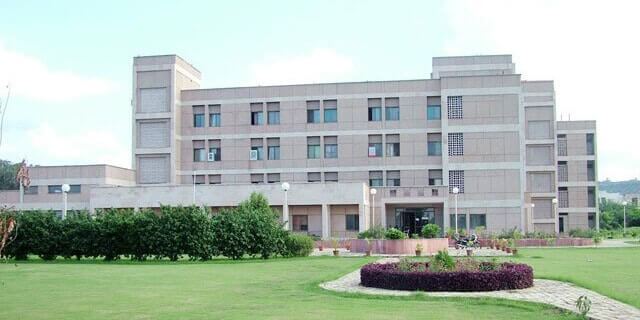JEE Advanced Syllabus 2020 – IIT Delhi has released the detailed syllabus of JEE Advanced 2020 along with the official notification. JEE Advanced 2020 syllabus will be highly beneficial for candidates who are preparing for the upcoming entrance examination. This is because the detailed JEE Advanced syllabus 2020 will help candidates to ensure that they are not missing any important topic to cover.
JEE Advanced 2020 syllabus consists of sections with their detailed topics for Physics, Chemistry, Mathematics, and Architecture Aptitude Test. JEE Advanced will be conducted by IIT Delhi as a computer based test. Along with the syllabus of JEE Advanced 2020, candidates can also check the list of the best books for the preparation of an exam. Read the complete article to know the JEE Advanced Syllabus 2020, best books for preparation, and some useful preparation tips.
JEE Advanced Syllabus 2020
Having a complete knowledge of each topic that must be covered under JEE Advanced 2020 syllabus to qualify the examination is immensely important for all candidates. It is essential for the candidates to know the syllabus well to prepare for JEE Advanced 2020.
JEE Advanced 2020 Syllabus for Physics
| Sections | Topics |
| General | Units and dimensionsDimensional analysisLeast count, significant figures; Methods of measurement and error analysis for physical quantities pertaining to the following experiments: Experiments based on using Vernier calipers and screw gauge (micrometer), Determination of g using simple pendulum, Young’s modulus by Searle’s method, Specific heat of a liquid using calorimeter, focal length of a concave mirror and a convex lens using u-v method, Speed of sound using resonance column, Verification of Ohm’s law using voltmeter and ammeter, and specific resistance of the material of a wire using meter bridge and post office box. |
| Mechanics | Kinematics in one and two dimensions (Cartesian coordinates only), projectiles; Uniform circular motion; Relative velocity.Newton’s laws of motion; Inertial and uniformly accelerated frames of reference; Static and dynamic friction; Kinetic and potential energy; Work and power; Conservation of linear momentum and mechanical energy.Systems of particles; Centre of mass and its motion; Impulse; Elastic and inelastic collisions.Law of gravitation; Gravitational potential and field; Acceleration due to gravity; Motion of planets and satellites in circular orbits; Escape velocity.Rigid body, moment of inertia, parallel and perpendicular axes theorems, moment of inertia of uniform bodies with simple geometrical shapes; Angular momentum; Torque; Conservation of angular momentum; Dynamics of rigid bodies with fixed axis of rotation; Rolling without slipping of rings, cylinders and spheres; Equilibrium of rigid bodies; Collision of point masses with rigid bodies.Linear and angular simple harmonic motions.Hooke’s law, Young’s modulus.Pressure in a fluid; Pascal’s law; Buoyancy; Surface energy and surface tension, capillary rise; Viscosity (Poiseuille’s equation excluded), Stoke’s law; Terminal velocity, Streamline flow, equation of continuity, Bernoulli’s theorem and its applications. Wave motion (plane waves only), longitudinal and transverse waves, superposition of waves; Progressive and stationary waves; Vibration of strings and air columns; Resonance; Beats; Speed of sound in gases; Doppler effect (in sound). |
| Thermal Physics | Thermal expansion of solidsLiquids and gasesCalorimetry, latent heatHeat conduction in one dimensionElementary concepts of convection and radiation, Newton’s law of coolingIdeal gas lawsSpecific heats (Cv and Cp for monoatomic and diatomic gases)Isothermal and adiabatic processes, bulk modulus of gasesEquivalence of heat and workFirst law of thermodynamics and its applications (only for ideal gases)Blackbody radiation: absorptive and emissive powers; Kirchhoff’s lawWien’s displacement law, Stefan’s law. |
| Electricity and Magnetism | Coulomb’s law; Electric field and potential; Electrical potential energy of a system of point charges and of electrical dipoles in a uniform electrostatic field; Electric field lines; Flux of electric field; Gauss’s law and its application in simple cases, such as, to find field due to infinitely long straight wire, uniformly charged infinite plane sheet and uniformly charged thin spherical shell.Capacitance; Parallel plate capacitor with and without dielectrics; Capacitors in series and parallel; Energy stored in a capacitor.Electric current; Ohm’s law; Series and parallel arrangements of resistances and cells; Kirchhoff’s laws and simple applications; Heating effect of current.Biot–Savart’s law and Ampere’s law; Magnetic field near a current-carrying straight wire, along the axis of a circular coil and inside a long straight solenoid; Force on a moving charge and on a current-carrying wire in a uniform magnetic field.Magnetic moment of a current loop; Effect of a uniform magnetic field on a current loop; Moving coil galvanometer, voltmeter, ammeter, and their conversions.Electromagnetic induction: Faraday’s law, Lenz’s law; Self and mutual inductance; RC, LR and LC circuits with d.c. and a.c. sources. |
| Optics | Rectilinear propagation of light; Reflection and refraction at plane and spherical surfaces; Total internal reflection; Deviation and dispersion of light by a prism; Thin lenses; Combinations of mirrors and thin lenses; Magnification.Wave nature of light: Huygen’s principle, interference limited to Young’s double-slit experiment. |
| Modern Physics | Atomic nucleus; α, β and γ radiations; Law of radioactive decay; Decay constant; Half Life and mean life; Binding energy and its calculation; Fission and fusion processes; Energy calculation in these processes.Photoelectric effect; Bohr’s theory of hydrogen-like atoms; Characteristic and continuous X-rays, Moseley’s law; de Broglie wavelength of matter waves. |
JEE Advanced 2020 Syllabus for Physical Chemistry
| Sections | Topics |
| General Topics | Concept of atoms and moleculesDalton’s atomic theoryMole conceptChemical formulaeBalanced chemical equationsCalculations (based on mole concept) involving common oxidation-reduction, neutralization, and displacement reactionsConcentration in terms of mole fraction, molarity, molality and normality. |
| Gaseous and Liquid State | Absolute scale of temperature, ideal gas equationDeviation from ideality, van der Waals equationKinetic theory of gases, average, root mean square and most probable velocities and their relation with temperatureLaw of partial pressuresVapour pressureDiffusion of gases. |
| Atomic Structure and Chemical Bonding | Bohr model, spectrum of hydrogen atom, quantum numbersWave-particle duality, de Broglie hypothesisUncertainty principleQualitative quantum mechanical picture of hydrogen atom, shapes of s, p and d orbitalsElectronic configurations of elements (up to atomic number 36)Aufbau principlePauli’s exclusion principle and Hund’s ruleOrbital overlap and covalent bondHybridisation involving s, p, and d orbitals onlyOrbital energy diagrams for homonuclear diatomic speciesHydrogen bondPolarity in molecules, dipole moment (qualitative aspects only)VSEPR model and shapes of molecules (linear, angular, triangular, square planar, pyramidal, square pyramidal, trigonal bipyramidal, tetrahedral and octahedral). |
| Energetics | First law of thermodynamicsInternal energy, work and heat, pressure-volume workEnthalpy, Hess’s lawHeat of reaction, fusion and vapourizationSecond law of thermodynamicsEntropyFree energyCriterion of spontaneity. |
| Chemical Equilibrium | Law of mass actionEquilibrium constant, Le Chatelier’s principle (effect of concentration, temperature and pressure)Significance of ΔG and ΔG0 in chemical equilibriumSolubility product, common ion effect, pH and buffer solutionsAcids and bases (Bronsted and Lewis concepts)Hydrolysis of salts. |
| Electrochemistry | Electrochemical cells and cell reactionsStandard electrode potentialsNernst equation and its relation to ΔGElectrochemical series, emf of galvanic cellsFaraday’s laws of electrolysisElectrolytic conductance, specific, equivalent and molar conductivity, Kohlrausch’s lawConcentration cells. |
| Chemical Kinetics | Rates of chemical reactionsOrder of reactionsRate constantFirst order reactionsTemperature dependence of the rate constant (Arrhenius equation). |
| Solid State | Classification of solids, crystalline state, seven crystal systems (cell parameters a, b, c, α, β, γ), close-packed structure of solids (cubic), packing in fcc, bcc and hcp latticesNearest neighbours, ionic radii, simple ionic compounds, point defects. |
| Solutions | Raoult’s lawMolecular weight determination from lowering of vapour pressure, elevation of boiling point and depression of freezing point. |
| Surface Chemistry | Elementary concepts of adsorption (excluding adsorption isotherms)Colloids: types, methods of preparation and general propertiesElementary ideas of emulsions, surfactants, and micelles (only definitions and examples). |
| Nuclear Chemistry | RadioactivityIsotopes and isobarsProperties of α, β and γ raysKinetics of radioactive decay (decay series excluded), carbon datingStability of nuclei with respect to proton neutron ratioBrief discussion on fission and fusion reactions. |
JEE Advanced 2020 Syllabus for Inorganic Chemistry
| Sections | Topics |
| Isolation/preparation and properties of the following non-metals | Boron, silicon, nitrogen, phosphorus, oxygen, sulphur and halogensProperties of allotropes of carbon (only diamond and graphite), phosphorus and sulphur |
| Preparation and properties of the following compounds | Oxides, peroxides, hydroxides, carbonates, bicarbonates, chlorides and sulphates of sodium, potassium, magnesium and calciumBoron: diborane, boric acid and boraxAluminium: alumina, aluminium chloride and alumsCarbon: oxides and oxyacid (carbonic acid)Silicon: silicones, silicates and silicon carbideNitrogen: oxides, oxyacids and ammoniaPhosphorus: oxides, oxyacids (phosphorus acid, phosphoric acid) and phosphineOxygen: ozone and hydrogen peroxideSulphur: hydrogen sulphide, oxides, sulphurous acid, sulphuric acid and sodium thiosulphateHalogens: hydrohalic acids, oxides and oxyacids of chlorine, bleaching powderXenon fluorides. |
| Transition Elements 3D Series | Definition, general characteristics, oxidation states and their stabilities, colour (excluding the details of electronic transitions) and calculation of spin-only magnetic momentCoordination compounds: nomenclature of mononuclear coordination compounds, cistrans and ionisation isomerisms, hybridization and geometries of mononuclear coordination compounds (linear, tetrahedral, square planar and octahedral). |
| Preparation and properties of the following compounds | Oxides and chlorides of tin and leadOxides, chlorides and sulphates of Fe2+, Cu2+ and Zn2+Potassium permanganate, potassium dichromate, silver oxide, silver nitrate, silver thiosulphate. |
| Ores and Minerals | Commonly occurring ores and minerals of iron, copper, tin, lead, magnesium, aluminium,zinc and silver. |
| Extractive metallurgy | Chemical principles and reactions only (industrial details excluded)Carbon reduction method (iron and tin)Self reduction method (copper and lead)Electrolytic reduction method (magnesium and aluminium)Cyanide process (silver and gold). |
| Principles of qualitative analysis | Groups I to V (only Ag+ , Hg2+, Cu2+, Pb2+, Bi3+, Fe3+, Cr3+, Al3+, Ca2+, Ba2+, Zn2+, Mn2+ and Mg2+)Nitrate, halides (excluding fluoride), sulphate and sulphide. |
JEE Advanced 2020 Syllabus for Organic Chemistry
| Sections | Topics |
| Concepts | Hybridisation of carbonσ and π-bondsShapes of simple organic moleculesStructural and geometrical isomerismOptical isomerism of compounds containing up to two asymmetric centres, (R,S and E,Z nomenclature excluded)IUPAC nomenclature of simple organic compounds (only hydrocarbons, mono-functional and bi-functional compounds)Conformations of ethane and butane (Newman projections)Resonance and hyperconjugationKeto-enoltautomerismDetermination of empirical and molecular formulae of simple compounds (only combustion method)Hydrogen bondsDefinition and their effects on physical properties of alcohols and carboxylic acidsInductive and resonance effects on acidity and basicity of organic acids and basesPolarity and inductive effects in alkyl halidesReactive intermediates produced during homolytic and heterolytic bond cleavageFormation, structure and stability of carbocations, carbanions and free radicals. |
| Preparation, properties and reactions of alkanes | Homologous series, physical properties of alkanes (melting points, boiling points and density)Combustion and halogenation of alkanesPreparation of alkanes by Wurtz reaction and decarboxylation reactions. |
| Preparation, properties and reactions of alkenes and alkynes | Physical properties of alkenes and alkynes (boiling points, density and dipole moments)Acidity of alkynesAcid catalysed hydration of alkenes and alkynes (excluding the stereochemistry of addition and elimination)Reactions of alkenes with KMnO4 and ozoneReduction of alkenes and alkynes; Preparation of alkenes and alkynes by elimination reactionsElectrophilic addition reactions of alkenes with X2, HX, HOX and H2O (X=halogen)Addition reactions of alkynes; Metal acetylides. |
| Reactions of benzene | Structure and aromaticityElectrophilic substitution reactions: halogenation, nitration, sulphonation, Friedel-Crafts alkylation and acylationEffect of o-, m- and p-directing groups in monosubstituted benzenes. |
| Phenols | Acidity, electrophilic substitution reactions (halogenation, nitration and sulphonation)Reimer-Tieman reaction, Kolbe reaction. |
| Characteristic reactions of the following (including those mentioned above) | Alkyl halides: rearrangement reactions of alkyl carbocation, Grignard reactions, nucleophilic substitution reactionsAlcohols: esterification, dehydration and oxidation, reaction with sodium, phosphorus halides, ZnCl2/concentrated HCl, conversion of alcohols into aldehydes and ketonesEthers: Preparation by Williamson’s SynthesisAldehydes and Ketones: oxidation, reduction, oxime and hydrazone formationAldol condensation, Perkin reactionCannizzaro reactionHaloform reaction and nucleophilic addition reactions (Grignard addition)Carboxylic acids: formation of esters, acid chlorides and amides, ester hydrolysisAmines: basicity of substituted anilines and aliphatic amines, preparation from nitro compounds, reaction with nitrous acid, azo coupling reaction of diazonium salts of aromatic amines, Sandmeyer and related reactions of diazonium salts; carbylamine reactionHaloarenes: nucleophilic aromatic substitution in haloarenes and substituted haloarenes (excluding Benzyne mechanism and Cine substitution). |
| Carbohydrates | ClassificationMono- and di-saccharides (glucose and sucrose)Oxidation, reduction, glycoside formation and hydrolysis of sucrose. |
| Amino Acids and Peptides | General structure (only primary structure for peptides) and physical properties. |
| Properties and uses of some important polymers | Natural rubber, cellulose, nylon, teflon and PVC. |
| Practical Organic Chemistry | Detection of elements (N, S, halogens)Detection and identification of the following functional groups: hydroxyl (alcoholic and phenolic), carbonyl (aldehyde and ketone), carboxyl, amino and nitroChemical methods of separation of mono-functional organic compounds from binary mixtures. |
JEE Advanced 2020 Syllabus for Mathematics
| Sections | Topics |
| Algebra | Algebra of complex numbers, addition, multiplication, conjugation, polar representation, properties of modulus and principal argument, triangle inequality, cube roots of unity, geometric interpretations.Quadratic equations with real coefficients, relations between roots and coefficients, formation of quadratic equations with given roots, symmetric functions of roots. Arithmetic, geometric and harmonic progressions, arithmetic, geometric and harmonic means, sums of finite arithmetic and geometric progressions, infinite geometric series, sums of squares and cubes of the first n natural numbers. Logarithms and their properties.Permutations and combinations, binomial theorem for a positive integral index, properties of binomial coefficients. |
| Matrices | Matrices as a rectangular array of real numbers, equality of matrices, addition, multiplication by a scalar and product of matrices, transpose of a matrix, determinant of a square matrix of order up to three, inverse of a square matrix of order up to three, properties of these matrix operations, diagonal, symmetric and skew-symmetric matrices and their properties, solutions of simultaneous linear equations in two or three variables. |
| Probability | Addition and multiplication rules of probability, conditional probability, Bayes Theorem, independence of events, computation of probability of events using permutations and combinations. |
| Trigonometry | Trigonometric functions, their periodicity and graphs, addition and subtraction formulae, formulae involving multiple and sub-multiple angles, general solution of trigonometric equations.Relations between sides and angles of a triangle, sine rule, cosine rule, half-angle formula and the area of a triangle, inverse trigonometric functions (principal value only). |
| Analytical Geometry | Two dimensions: Cartesian coordinates, distance between two points, section formulae, shift of origin.Equation of a straight line in various forms, angle between two lines, distance of a point from a line; Lines through the point of intersection of two given lines, equation of the bisector of the angle between two lines, concurrency of lines; Centroid, orthocentre, incentre and circumcentre of a triangle.Equation of a circle in various forms, equations of tangent, normal and chord. Parametric equations of a circle, intersection of a circle with a straight line or a circle, equation of a circle through the points of intersection of two circles and those of a circle and a straight line.Equations of a parabola, ellipse and hyperbola in standard form, their foci, directrices and eccentricity, parametric equations, equations of tangent and normal. Locus problems.Three dimensions: Direction cosines and direction ratios, equation of a straight line in space, equation of a plane, distance of a point from a plane. |
| Differential Calculus | Real valued functions of a real variable, into, onto and one-to-one functions, sum, difference, product and quotient of two functions, composite functions, absolute value, polynomial, rational, trigonometric, exponential and logarithmic functions.Limit and continuity of a function, limit and continuity of the sum, difference, product and quotient of two functions, L’Hospital rule of evaluation of limits of functions.Even and odd functions, inverse of a function, continuity of composite functions, intermediate value property of continuous functions.Derivative of a function, derivative of the sum, difference, product and quotient of two functions, chain rule, derivatives of polynomial, rational, trigonometric, inverse trigonometric, exponential and logarithmic functions.Derivatives of implicit functions, derivatives up to order two, geometrical interpretation of the derivative, tangents and normals, increasing and decreasing functions, maximum and minimum values of a function, Rolle’s Theorem and Lagrange’s mean value theorem. |
| Integral Calculus | Integration as the inverse process of differentiation, indefinite integrals of standard functions, definite integrals and their properties, fundamental theorem of integral calculus.Integration by parts, integration by the methods of substitution and partial fractions, application of definite integrals to the determination of areas involving simple curves. Formation of ordinary differential equations, solution of homogeneous differential equations, separation of variables method, linear first order differential equations |
| Vectors | Addition of vectors, scalar multiplication, dot and cross products, scalar triple products and their geometrical interpretations. |
JEE Advanced 2020 Syllabus for Architecture Aptitude Test
| Sections | Topics |
| Freehand Drawing | This would comprise of simple drawing depicting the total object in its right form and proportion, surface texture, relative location and details of its component parts in appropriate scale. Common domestic or day-to-day life usable objects like furniture, equipment, etc.from memory. |
| Geometrical Drawing | Exercises in geometrical drawing containing lines, angles, triangles, quadrilaterals, polygons, circles, etc. Study of plan (top view), elevation (front or side views) of simple solid objects like prisms, cones, cylinders, cubes, splayed surface holders, etc. |
| Three-dimensional Perception | Understanding and appreciation of three-dimensional forms with building elements, colour, volume and orientation. Visualization through structuring objects in memory |
| Imagination and Aesthetic Sensitivity | Composition exercise with given elements. Context mapping. Creativity check through innovative uncommon test with familiar objects. Sense of colour grouping or application. |
| Architectural Awareness | General interest and awareness of famous architectural creations – both national and international, places and personalities (architects, designers, etc.) in the related domain. |






